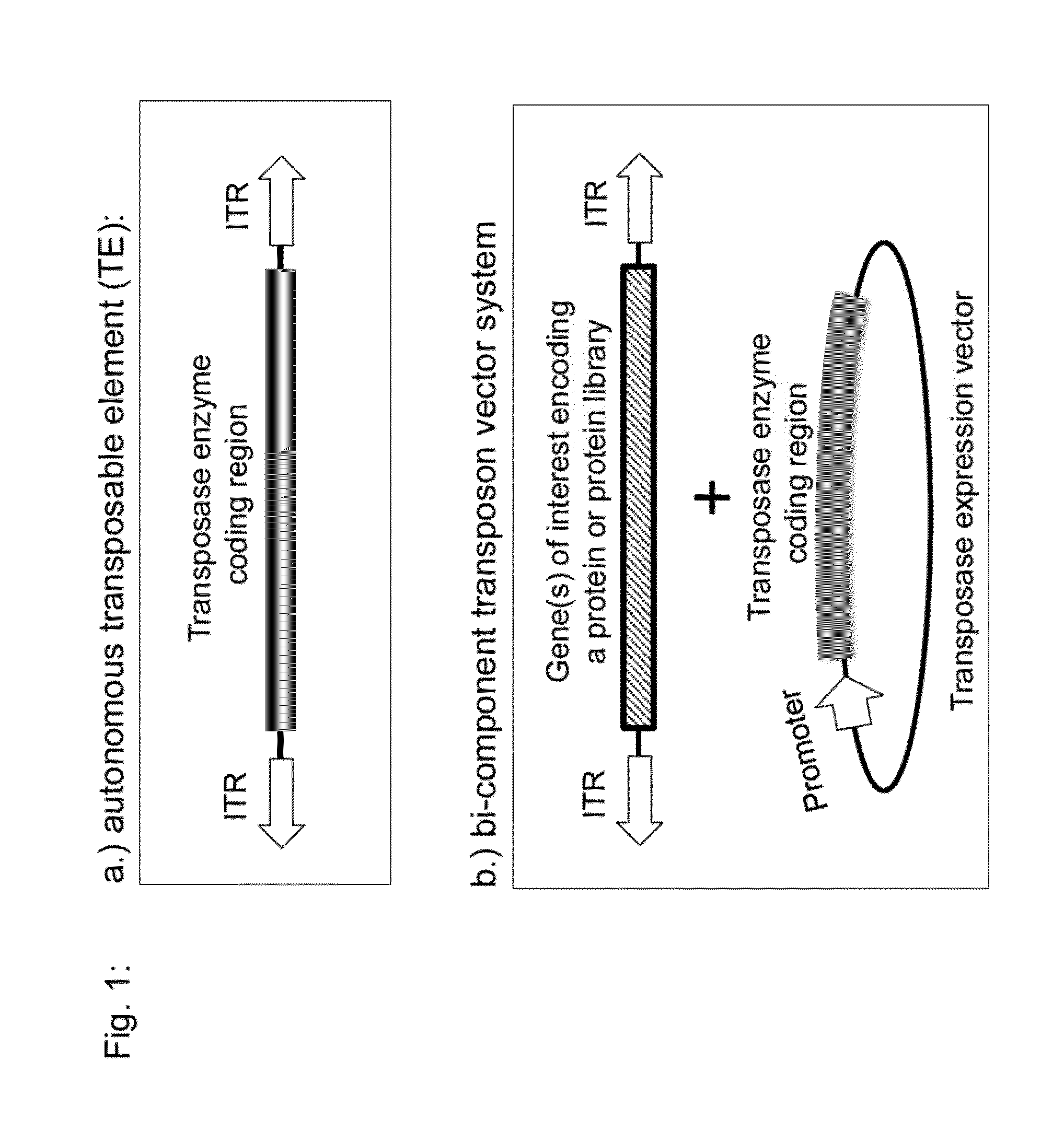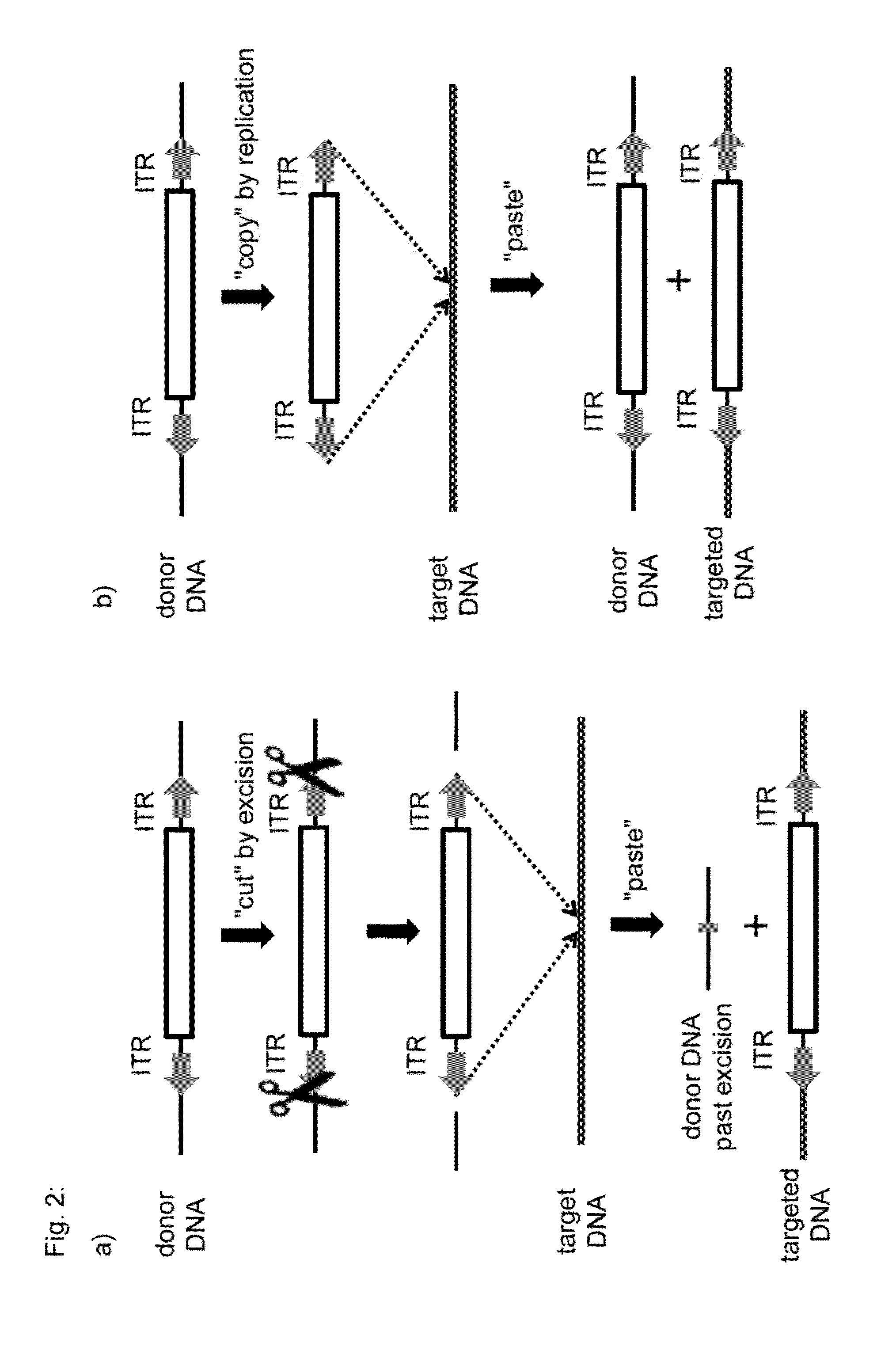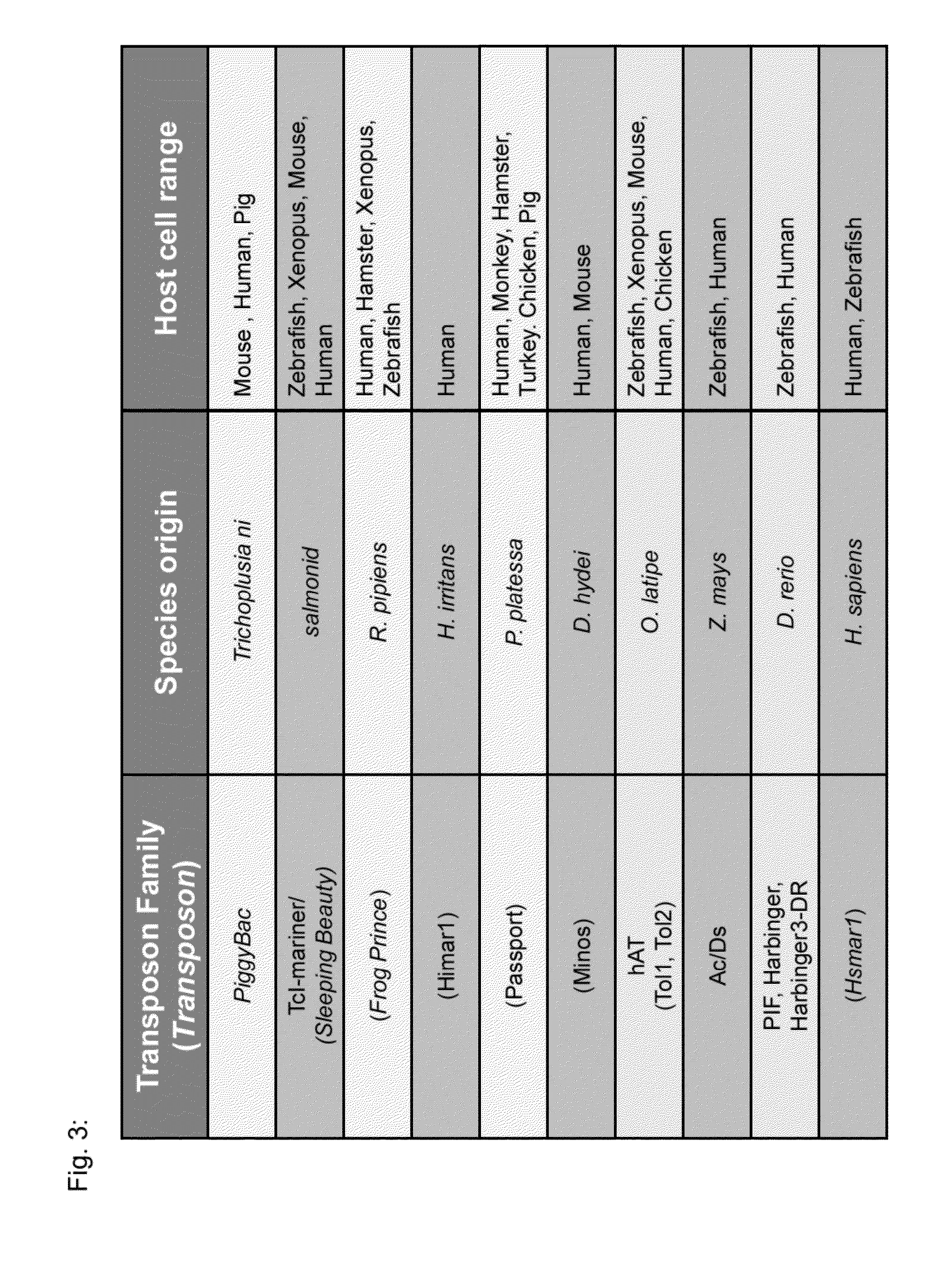Transposition-mediated identification of specific binding or functional proteins
a technology of functional proteins and transferases, which is applied in the field of identification of specific functional and binding proteins, can solve the problems of lack of proper post-translational modification, inability to express full-length versions of larger proteins, including full-length antibodies, etc., and achieves the effects of unmatched efficiency, flexibility, and stable introduction
- Summary
- Abstract
- Description
- Claims
- Application Information
AI Technical Summary
Benefits of technology
Problems solved by technology
Method used
Image
Examples
example 1
Instruction for Cloning of Basic PiggyBac Transposable Light Chain Expression Vector for Human Antibody Kappa Light Chains Compatible with the PiggyBac Transposase Enzyme
[0126]A basic transposable expression vector for human kappa light chains can be generated by cloning of the ITRs from the PiggyBac transposon up and downstream of a human immunoglobulin kappa light chain expression cassette.
[0127]For this, as a first step, the minimal sequences for the up- and downstream ITRs of the PiggyBac transposon can be derived from pXLBacII (published in U.S. Pat. No. 7,105,343) (incorporated herein by reference in its entirety) and can be gene synthesized with flanking restriction enzyme sites for cloning into the mammalian expression vector pIRES-EGFP (PT3157-5, order #6064-1, Invitrogen-Life Technologies, Carlsbad, Calif., USA)
[0128]The upstream PiggyBac ITR sequence with the 5′ terminal repeat has to be gene synthesized with flanking MunI restriction enzyme sequence, compatible with a un...
example 2
Instruction for Cloning of a Basic PiggyBac Transposable Heavy Chain Expression Vector for Membrane Spanning Human Antibody Gamma1 Heavy Chains
[0144]In order to clone a transposable Ig heavy chain expression vector, the kappa light chain ORF from pIRES-EGFP-T1T2-IgL (SEQ ID NO:5) needs to be exchanged with an ORF encoding a fully human IgG1 heavy chain coding region.
[0145]For the replacement of the human kappa light chain in vector pIRES-EGFP-T1T2-IgL by a human immunoglobulin gamma-1 heavy chain, the VH region of antibody D2E7, which is specific for human TNF-alpha (see: EP 1 285 930 A2) (incorporated herein by reference in its entirety) can be synthesized. For this, a leader sequence of a close germ-line VH3-region family member is fused in frame to the VH region of antibody D2E7, which then is fused in frame to the coding region of a human gamma1 constant region (Genbank: J00228) including the membrane spanning exons (Genbank: X52847). In order to be able to replace the human Ig ...
example 3
Instructions for Cloning of Basic Transposable Light Chain Expression Vector for Human Antibody Kappa Light Chains Compatible with the Sleeping Beauty Transposase Enzyme
[0154]In order to transpose human immunoglobulin heavy and light chain expression vectors contained in a transposable vector independently into host cells, a transposable immunoglobulin light chain construct with different inverted terminal repeat (ITR) sequences can be constructed that are recognized by the Sleeping Beauty transposase.
[0155]For this, the human Ig-kappa light chain expression vector pIRES-EGFP-T1T2-IgL (SEQ ID NO:5) of example 1 can be used to replace the 5′ and 3′ ITRs of the PiggyBac transposon system, contained in this vector, with the 5′ and 3′ ITRs of the Sleeping Beauty transposon system. The sequences for the Sleeping Beauty 5′ITR and 3′ITR, recognized and functional with the Sleeping Beauty transposase, can be retrieved from patent document U.S. Pat. No. 7,160,682B1 / US2003154500A1.
[0156]The u...
PUM
| Property | Measurement | Unit |
|---|---|---|
| length | aaaaa | aaaaa |
| fluorescence activated | aaaaa | aaaaa |
| stability | aaaaa | aaaaa |
Abstract
Description
Claims
Application Information
 Login to View More
Login to View More - R&D
- Intellectual Property
- Life Sciences
- Materials
- Tech Scout
- Unparalleled Data Quality
- Higher Quality Content
- 60% Fewer Hallucinations
Browse by: Latest US Patents, China's latest patents, Technical Efficacy Thesaurus, Application Domain, Technology Topic, Popular Technical Reports.
© 2025 PatSnap. All rights reserved.Legal|Privacy policy|Modern Slavery Act Transparency Statement|Sitemap|About US| Contact US: help@patsnap.com



